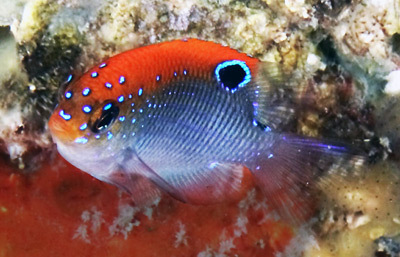One of the more challenging aspects of marine fishkeeping, particularly for those interested in creating a mixed community of interesting fishes, is choosing different species that will coexist peacefully in captivity.
This might seem easy enough given the fact that, in the wild, so many different species can often be found sharing the same patch of reef and that many species commonly form schools or shoals, sometimes numbering in the thousands. However, what works in the wild doesn’t always translate to hobbyists’ tanks. Why is that?
Well, it’s a matter of scale (excuse the pun). When you take fishes from the (for all intents and purposes) limitless ocean and place them in water-filled glass or acrylic boxes, certain factors that promote territorial aggression are bound to come into play.
Territorial restriction
One of these factors is the significant restriction of territorial real estate that’s available for fishes to claim. For example, some species—Stegastes spp. damsels come to mind here—naturally claim territories that are greater in area than most home aquariums. Thus, when introduced to an aquarium, they tend to consider themselves “kings (or queens) of all they survey,” meaning the whole tank belongs to them as far as they’re concerned and any fish that shares the tank is fair game for relentless attacks.
It’s also common for some of the fishes in a community aquarium to claim all the suitable caves, crevices, or ledges in the rockwork, leaving others with no option but to attempt to forcibly evict the current tenants and claim these niches as their own. The all-too-common consequence: endless squabbling.
In sight, in mind
Even species that aren’t fixated on defending a particular territory can take issue with certain tankmates, for instance those that are similar in appearance or feeding habits and therefore perceived as likely resource competitors.
In this case, the close confines of an aquarium make it very difficult for a targeted specimen to escape its tormentor’s line of sight without perpetually remaining hidden in the rockwork or substrate. Simply venturing out to grab a quick bite of food floating in the water column can elicit an attack. And, of course, the smaller the aquarium, the more pronounced this effect will be. By contrast, a fish that runs afoul of a bully in nature can simply swim to another part of the reef to escape detection.
The numbers game
The aquarium environment necessarily imposes limits on the number of specimens that can share the same space. As a result, any bullying behavior tends to be focused on one or a few fish rather than being diffused among many individuals. This is one of the reasons it’s often risky to keep marine fish in schools in aquariums.
In any school of fish, a natural hierarchy tends to develop, with individuals higher in the pecking order exerting dominance over those below them. When a smaller school is kept, as is often the case in aquariums, a few subordinate individuals will catch the brunt of this aggressive behavior and may be stressed to the point of death, one after another, until only the most dominant specimen remains.
What’s your take on territoriality?
So, fellow salties, what have I overlooked in this post? Please share your insights in the comment section below.



